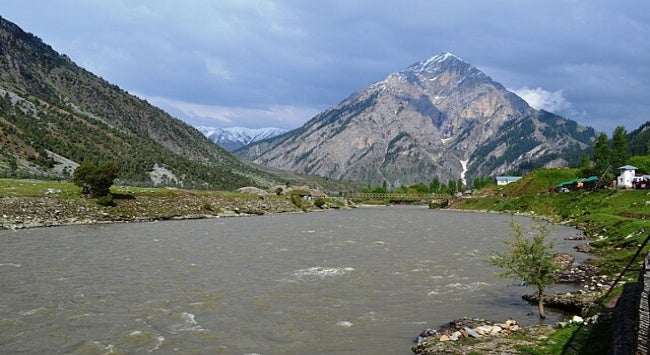Summary
Recent statements by several Pakistani leaders and military officials regarding the Indus Waters Treaty underscore the deep linkage between water and national security in Pakistan. While the Court of Arbitration is currently examining technical issues related to the Kishanganga and Ratle hydroelectric projects, India does not recognise the Court’s legitimacy. Against this backdrop, water-related disputes continue to be a source of sustained tension in India-Pakistan relations.
Tensions between India and Pakistan over the nearly 65-year-old Indus Waters Treaty (IWT) have intensified since India suspended the agreement in April 2025, following a terrorist attack in Pahalgam, Jammu & Kashmir, which killed 26 tourists.
In early August 2025, addressing members of the Pakistani diaspora in Tampa, Florida, in the United States (US) during a visit, Chief of the Pakistan Army Field Marshal Asim Munir said, “We will wait for India to build a dam, and when it does so, 10 missiles se faarigh kar denge (we will destroy it with 10 missiles)”. He added, “the Indus River is not the Indians’ family property. Humein missilon ki kami nahi hai, Al-Hamdulillah (we do not have a missile shortage, Praise be to God)”.
Similar sentiments were shared by Pakistan’s Prime Minister Shehbaz Sharif during a ceremony in Islamabad on 12 August 2025, “I want to tell the enemy [India] today that if you threaten to hold our water, then keep this in mind that you cannot snatch even one drop from Pakistan”. And on 13 August 2025, Pakistan Peoples Party Chairman Bilawal Bhutto Zardari “vowed to confront India [on water matters] both diplomatically and, if necessary, on the battlefield”.
India termed Munir’s statement “nuclear sabre-rattling” and irresponsible, adding that it would not “give in to nuclear blackmail” and take necessary steps to “safeguard our national security”. In his weekly media briefing on 14 August 2025, Randhir Jaiswal, spokesperson from India’s Ministry of External Affairs, added, “We have seen reports regarding a continuing pattern of reckless, warmongering and hateful comments from Pakistani leadership against India…Pakistan would be well advised to temper its rhetoric, as any misadventure will have painful consequences, as was demonstrated recently.”
Amidst the war of words, the Court of Arbitration (CoA), set up by the World Bank in 2022, a partial signatory to the IWT, rendered an award on 8 August 2025 on “Issues of General Interpretation of the IWT”. After interpreting questions such as on the flow of the Western Rivers (Jhelum, Indus and Chenab), run-of-river hydro-electric plants and the legal effect of decisions issued by dispute resolution bodies under the Treaty (namely, courts of arbitration and neutral experts), the CoA, in short, said that matters between the two countries needed to be resolved through dialogue and mechanisms set up under the IWT. It also said that its awards are binding on India and Pakistan and without appeal. In this award, the CoA did not address the issues relating to the specific circumstances of the Kishanganga and Ratle Hydroelectric Plant.
Proceedings to institute the CoA began in August 2016 at the request of Pakistan under Article IX and Paragraph 2(b) of Annexure G to the IWT. India and Pakistan disagreed on the technical design of the Kishanganga and Ratle plants. In order to deal with the matter, Pakistan argued for instituting a CoA while India asked for a Neutral Expert. In October 2022, the World Bank set up both. Michel Lino was appointed as the Neutral Expert and Professor Sean Murphy as Chairman of the CoA.
India raised questions on the CoA’s competency. On 6 July 2023, in a unanimous decision, the CoA rejected India’s objections, maintaining that it was competent to consider and determine the disputes brought before it by Pakistan for arbitration. On the decision, New Delhi said, “[It] cannot be compelled to recognise or participate in illegal and parallel proceedings not envisaged by the Treaty”.
On 27 June 2025, around two months after the IWT was held in abeyance by India, the CoA issued a Supplemental Award, stating that holding the IWT in abeyance did not limit its competence. At that time, India said, “Until such time that the Treaty is in abeyance, India is no longer bound to perform any of its obligations under the Treaty. No CoA, much less this illegally constituted arbitral body which has no existence in the eye of law, has the jurisdiction to examine the legality of India’s actions in exercise of its rights as a sovereign.”
On the 8 August 2025 award by the CoA, Pakistan’s Ministry of Foreign Affairs’ statement stated, “It is an endorsement of Pakistan’s historical stance on the afore-stated issues. Pakistan remains committed to the full implementation of the Indus Waters Treaty. It also expects India to immediately resume the normal functioning of the Treaty, and faithfully implement the Award announced by the Court of Arbitration”. On the contrary, Jaiswal reiterated that India has never accepted the CoA’s legality. India also rejected “Pakistan’s selective and misleading references to the so-called award”.
India’s decision to place the IWT in abeyance, its refusal to recognise the CoA and Islamabad’s issuance of military, including nuclear threats to New Delhi, continue to strain bilateral relations. In this volatile context, the future of the IWT remains uncertain and fraught with tension, unless both nations choose to recalibrate their engagement through dialogue and diplomacy.
. . . . .
Dr Amit Ranjan is a Research Fellow at the Institute of South Asian Studies (ISAS), an autonomous research institute at the National University of Singapore (NUS). He can be contacted at isasar@nus.edu.sg. The author bears full responsibility for the facts cited and opinions expressed in this paper.
Pic credit: Wikimedia Commons
-
 More From :
More From :
-
 Tags :
Tags :
-
 Download PDF
Download PDF



